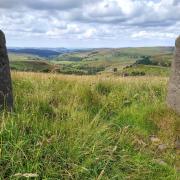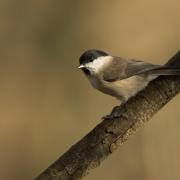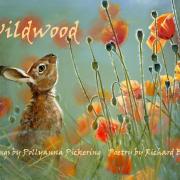One of the longest running and most comprehensive citizen science projects, the RSPB’s Garden Birdwatch scheme is arguably more important now than ever before, as Paul explains.
Surveying wildlife used to be something which was left to the boffins, scientists and amateurs with amazing identification skills.
Unfortunately, this approach had a flaw in that there were not many people who qualify, so any survey was often limited in scope.

To survey a whole country was seen as wildly optimistic and very unlikely. However, today we have crossed that rubicon with the advent of citizen science projects with two factors allowing these to flourish.
There are now more people interested in wildlife, therefore willing to participate, but the most important change is the internet and social media. These now reach virtually everybody, and their immediacy makes taking part and contributing results so much easier.
One of the longest running and most comprehensive citizen science projects is the RSPB's Garden Birdwatch, which has been running for 45 years. It has all the ingredients for success.

The RSPB is the largest conservation organisation in the UK, with a membership of 1.2 million, but you don't have to be a member to take part.
The choice of focusing on garden birds was inspired. Feeding birds in the garden is something which is now engrained in the British psyche and whilst, not everybody has a garden, a great many of us do, even if it is only a tiny patch. For those who don't have a garden, a local park is equally suitable.
The last reason for the amazing success of the birdwatch is the incredible ease in which it can be carried out. You can simply sit with a cuppa next to your window, warm and cosy, and record all the birds you see in your garden in just one hour.

The Garden Birdwatch takes place every year in late January, with the results displayed live on the RSPB's website. The top ten in 2023 were:
1. House Sparrow: 1.4m
2. Blue tit: 904,637
3. Starling: 904,079
4. Wood Pigeon: 50,251
5. Blackbird: 716,734
6. Robin: 498,612
7. Goldfinch: 491,934
8. Great tit: 452,750
9. Magpie: 393,725
10. Long tailed tit: 339,793
This year’s results are very similar, with minor changes. The top four remain in the lead, with the top three showing slight increases in numbers. Blackbird numbers are a little lower, and great tits have flown up the table to position six.
However, what the table does not show are the longer trends, and some of these are amazing success stories.


The numbers of goldfinch and great tit numbers have risen dramatically in the last ten years. The reasons are simple, more people now feed garden birds, and a run of mild winters has benefitted these two species.
Goldfinches have increased by ten per cent in the last decade, which illustrates a more subtle issue. We feed garden birds in a different way than we did 30 or 40 years ago.
When I grew up, my parents were avid garden bird feeders, but this was restricted to just peanuts alone, which they bought from the local greengrocer.
Occasionally, they would add seed, which I brought home from the farm I worked during my school holidays. There were no specialist feeders for goldfinches, so we rarely saw charms of this drop dead gorgeous, little bird.
Unfortunately, the long term trends also have a dark side. If I had to guess the top ten birds, based on my childhood experiences, I would have had the song thrush well ensconced, but it only manages to get to position 20 today, declining by a huge 80% since 1979.

Greenfinch is another casualty, with a 66% decline, mainly due to a horrible disease, trichomonosis, which hinders their ability to feed.
A brief glance at the table can also give some false optimism. House sparrows are still holding on to the top spot, so they look as though they are doing well, but as many readers will know, because they are absent from so many gardens, they have actually declined by over half in the last few decades.
One of the major reasons is a lack of small invertebrates during the breeding season. However, saying this, as we fall back in love with sparrows, and more people feed garden birds, their numbers are rising slowly.
The RSPB Garden Birdwatch website is a fantastic place to visit. It is possible to see how our own county is faring.

When I wrote this article, garden birdwatchers in Derbyshire had submitted nearly 7,500 records, and our top three birds were house sparrow, blue tit and wood pigeon, though the latter, perhaps, not to every ones liking?
Citizen science projects now play a vital part in the UK, allowing conservationists to get a much better understanding of what is happening to our precious wildlife.
They are also a perfect way to engage people, particularly children (there is a big School Birdwatch), with wildlife and they give importance to what we see, and this gives great satisfaction.
So, the next time you come across a science project asking for help, such as the Look Wild project in the Peak, take a few minutes to see if you can contribute.



























